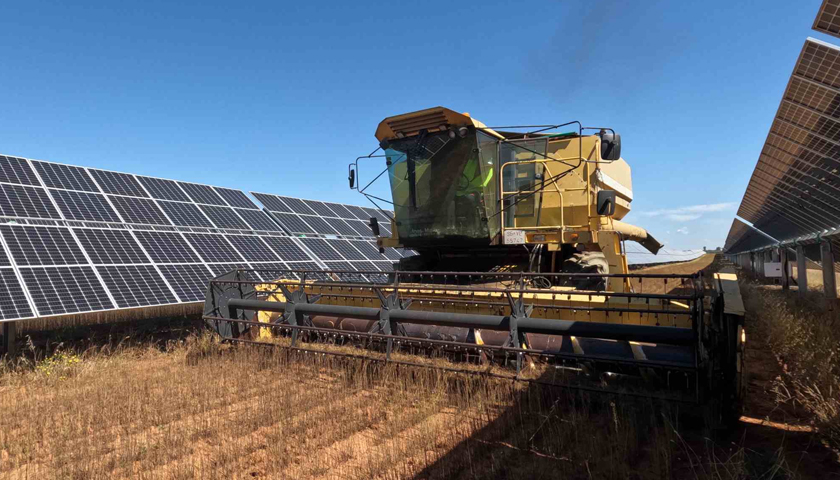Through its renewable subsidiary Enel Green Power España, Endesa has taken another step towards coexistence between renewable installations and the primary sector by using agricultural machinery to make the first harvest of an agrivoltaic crop grown between solar panels.
This milestone was reached at the Las Corchas solar plant, in town of Carmona in the province of Seville. Since 2021 the Endesa Innovation team and the CTAEX (National Agrifood Technology Centre) have been studying here the feasibility of growing crops between solar panels. This pioneering experience in the renewable sector has brought about the cultivation of aromatic plants that are resistant to the high temperatures in the area and has also helped increase pollination from the beehives in the area including a solar apiary in the installation itself.
“This first step has enabled us to discover that solar panels are beneficial for the plants as they maintain soil temperature,” explained Andrés Sánchez-Biezma, Head of Innovation for Endesa’s renewable subsidiary, Enel Green Power España. “Agrivoltaics is no longer experimental, it has become a reality that is now included in the plans for building new renewable installations, because it represents the natural coexistence between the primary and industrial sectors,” he said.
Once this synergy had been demonstrated, Endesa’s innovation team and CTAEX experts went one step further and in collaboration with Juan Antonio, a local farmer, planted 2 hectares of flax which has just been harvested using heavy agricultural machinery, and this makes it the first solar flax for industrial use.
“It was quite a challenge which involved close collaboration with the producer to make the project a reality. The agricultural land is protected, free of pesticides and then there is the additional benefit provided by the solar panels,” explained Jesús Gil, the CTAEX manager responsible for the project. “The project with Endesa ultimately consists of allocating the surface area occupied by the renewable plant to agricultural production. This enables the land to return to its agricultural use by local entities in the areas where renewable installations are located”.
Juan Antonio works for Plantaroma, a local company that grows aromatic plants, and he took part in the project from the very beginning. “To me the project seemed very innovative, and something that could provide my product with differential,” he explained. “It was me who prepared the land, planted the seeds and now harvested the crop, and I have to say that it has been a positive experience that I hope to be able to repeat. We managed to overcome the initial fear of going through with a combine harvester” he said smiling, “now we will take this flax to our factory where it will be used and where we will extract seeds to plant for the next crop.”
Endesa is undertaking agrivoltaic projects in other plants such as Valdecaballeros and Augusto in Extremadura and Totana in the province of Murcia where there has been experimental harvesting of all kinds of products including courgettes, aubergines, ñora peepers, aloe vera, and even tropical pitaya fruit.
After the success of the flax harvest in Carmona, Endesa’s innovation team is also working on expanding the arable area to 10 hectares at the Valdecaballeros de Cáceres solar plant, where a European consortium from more than 20 countries is looking to cultivate rosemary for use as biomass in a local company. This project is called SustaiNext and it is in the processing phase. It represents a clear European commitment to this type of coexistence between the primary and industrial sectors.
